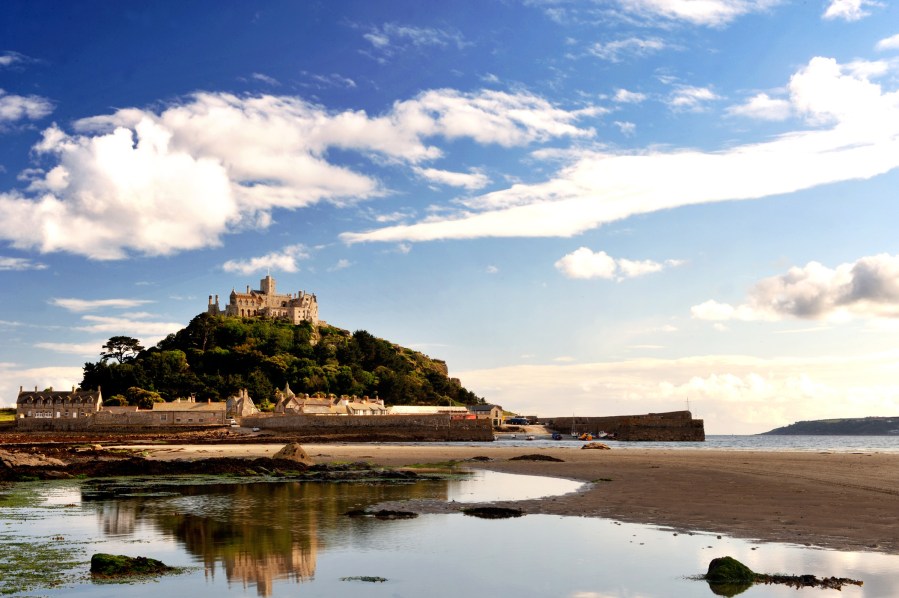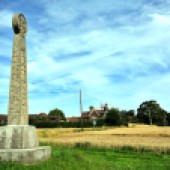Take a walk on one of the British Isles’ ancient pilgrimage routes to discover holy cliffs, historic landmarks and soul-soothing seascapes
WORDS Alex Reece
1. FOR… A PEMBROKESHIRE PILGRIMAGE
St Davids, Pembrokeshire
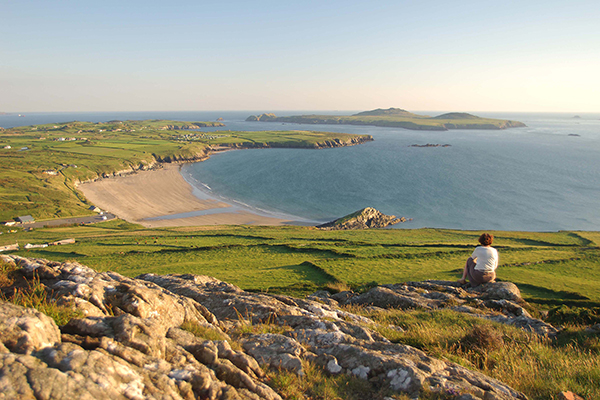
THE ROUTE: Discover more about Wales’ patron saint on a walk of about six miles around the city of St Davids.
HISTORY & HIGHLIGHTS: The shrine at St Davids became a centre for pilgrimage in the 12th century, when Pope Calixtus II declared that two trips here were equivalent of one to Rome – and three to a journey to Jerusalem. Nowadays there is no official pilgrim’s route to follow, although there are traces of ancient paths, and the peninsula provides a peaceful escape from modern concerns. Walk from St Non’s Chapel and Well – the birthplace of St David – to the city’s cathedral and then on to Whitesands Beach, which is associated with St Patrick.
WALK IT WITH: Professional guide Andrew Dugmore leads bespoke walks and walking holidays on the St Davids Peninsula. For prices and more details, call 07801 579225 (pembrokeshirepaths.co.uk). See also visitpembrokeshire.com.
2. FOR… COAST & COUNTRYSIDE
The Fife Pilgrim Way, Fife
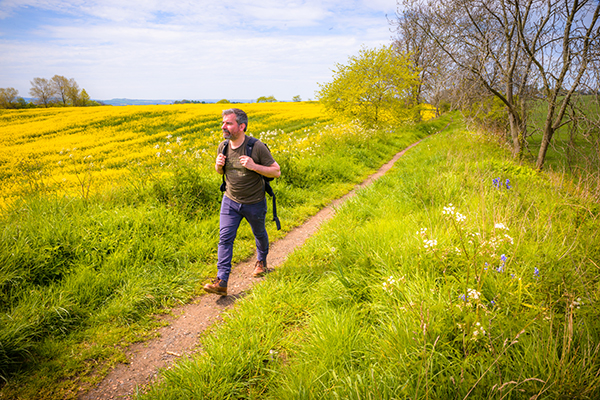
THE ROUTE: Open since July 2019, this newly restored 64-mile route takes walkers from either Culross or North Queensferry on the Firth of Forth to the coastal town of St Andrews.
HISTORY & HIGHLIGHTS: The Kingdom of Fife was a popular destination for medieval pilgrims wanting to venerate the relics of St Andrew (one of Jesus’s disciples), in the sacred city bearing his name. This long-distance path follows in their footsteps, and passes other sites of spiritual significance, such as Dunfermline Abbey (home to the shrine of St Margaret) and St Finglassin’s holy well in Kinglassie. Take time to explore the atmospheric ruins of St Andrews Cathedral, overlooking the North Sea.
WALK IT WITH: Follow the trail via the website fifecoastandcountrysidetrust.co.uk/walks/fife-pilgrim-way or the dedicated Facebook page.
3. FOR… A HEBRIDEAN HAVEN
Isle of Iona, Inner Hebrides
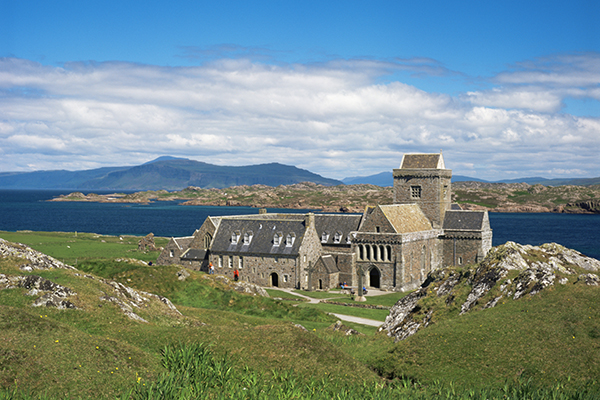
THE ROUTE: A five-mile circuit with a local guide, taking in the many holy and historical sites of Iona.
HISTORY & HIGHLIGHTS: Since the arrival of Ireland’s St Columba on Iona in the 6th century, when he established a monastic community and converted many to Christianity, the island has been a destination for pilgrims, and several Scottish, Irish and Norwegian kings are buried here, too. Starting from Iona Abbey, walk on to see places where Columba is believed to have prayed, such as the Hermit’s Cell and the Hill of the Angels. Explore the wildlife-rich machair and St Columba’s Bay, where you might find the green, serpentine pebbles, known as ‘St Columba’s Tears’.
WALK IT WITH: Iona tour guide Jana McLellan leads pilgrimage walks around the island. For details and prices, call 07840 650199 or email [email protected].
4. FOR… A SEA-CLIFF CLIMB
The Pilgrim’s Path, Slieve League, Donegal

THE ROUTE: The Pilgrim’s Path to the summit of the Slieve League cliffs – around 600m above sea level – is roughly two miles in length and takes two-three hours to complete.
HISTORY & HIGHLIGHTS: Ancient ruins suggest that the Slieve League cliffs have been a place of pilgrimage since pre-Christian times. High on the slopes you’ll also find remains of an early Christian monastic site, complete with the distinctive beehive huts. Held to be the highest accessible sea cliffs in Europe, they offer awe-inspiring views from the top, sweeping far along Ireland’s west coast and out to sea.
Walking Ireland offers full-day guided walks along the Pilgrim’s Path. Price varies according to group size, from €60pp for three participants (+353 86 6059220, walkingireland.ie).
5. FOR… A MISSIONARY’S PATH
The Way of St Augustine, Kent

THE ROUTE: A 19-mile hike from Ramsgate through the Stour Valley to Canterbury. The walk can be done in a day, or in sections over a longer period.
HISTORY & HIGHLIGHTS: This path links the Shrine of St Augustine in Ramsgate – designed by Augustus Pugin – and the historic pilgrim city of Canterbury. Starting in Ramsgate, the first stretch follows the coast to Cliffsend, site of the 19th-century St Augustine’s Cross, which commemorates the nearby spot where, shortly after his arrival from Rome, St Augustine met King Æthelberht of Kent 1,500 years ago. Augustine went on to become the first Archbishop of Canterbury in 597.
WALK IT WITH: Follow the route by using the detailed maps provided by Explore Kent at explorekent.org/activities/the-way-of-st-augustine. Alternatively, book a guided or self-guided trip, including baggage transfers, through augustinecamino.co.uk.
6. FOR… A CORNISH CAMINO
St Michael’s Way, Cornwall
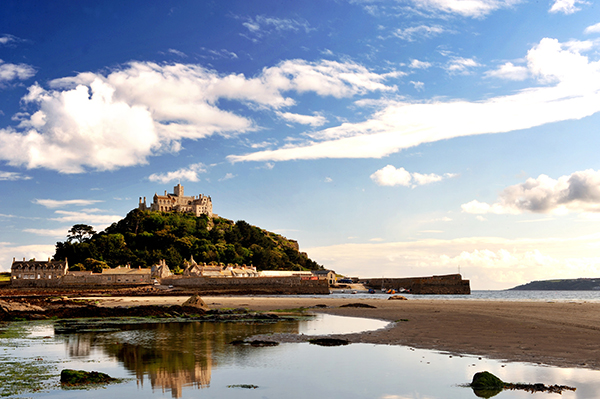
THE ROUTE: A 12.5-mile walk from the village of Lelant, near St Ives, to St Michael’s Mount outside Penzance, crossing the tip of the Cornish peninsula from coast to coast.
HISTORY & HIGHLIGHTS: Forming part of the network of trails that lead to St James’s Cathedral in Santiago de Compostela, Spain, this pathway is believed to have been trodden by missionaries and pilgrims heading to Spain from Ireland and Wales. The route culminates in a crossing to St Michael’s Mount (nationaltrust.org.uk/st-michaels-mount), either by boat or over the cobbled causeway at low tide.
WALK IT WITH: Encounter Walking Holidays offers a self-guided tour, taking in the trail plus the coastal path around Land’s End, from £90-£100 a day, based on two people sharing (01208 871066, encounterwalkingholidays.com).
7. FOR… A SPIRITUAL JOURNEY
St Cuthbert’s Way, Northumberland

THE ROUTE: A 62-mile, long-distance trail from Melrose in the Scottish Borders to the Holy Island of Lindisfarne off the Northumberland coast.
HISTORY & HIGHLIGHTS: Mapping out the life of St Cuthbert (c.634-687), this path starts at Melrose, near where he grew up, continuing through woods, fields and moorland to Holy Island, where he served as a bishop. The tidal walk across the sands to Lindisfarne is likely to be a memorable part of this trip – as is spending the night in this remote, offshore outpost with its priory ruins and hill-top castle (nationaltrust.org.uk/lindisfarne-castle).
WALK IT WITH: Macs Adventure provides self-guided walking tours along St Cuthbert’s Way. Prices start from £435 pp for six days and five nights (0141 5305453, macsadventure.com).
8. FOR… AN ISLAND ODYSSEY
The Pilgrim’s Way, North Wales
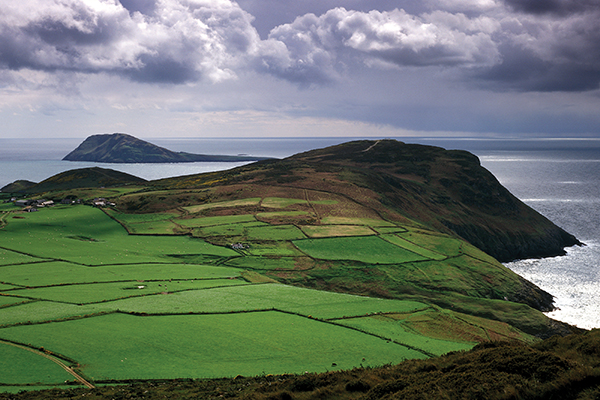
THE ROUTE: This 130-mile trek begins at Basingwerk Abbey, near Holywell in Flintshire, and ends at Bardsey Island off the Llyn Peninsula, taking around nine days in total to complete.
HISTORY & HIGHLIGHTS: Sacred to both Celtic Druids and early Christians, Bardsey is often referred to as the burial place of 20,000 saints – and in the Middle Ages, three pilgrimages to Bardsey Island were believed to equal one to Rome. Mynydd Mawr, the final hill overlooking the island, is a particular highlight, with views reaching as far as the Wicklow Mountains in Ireland on a clear day.
WALK IT WITH: Edge of Wales Walk offers bespoke walking holidays and luggage transfers along the whole of The Pilgrim’s Way, as well as a week-long package covering the last 50 miles from £514pp (01758 760652, edgeofwaleswalk.co.uk). See also pilgrims-way-north-wales.org.
9. FOR… A SAXON CHAPEL
St Peter’s Way, Essex
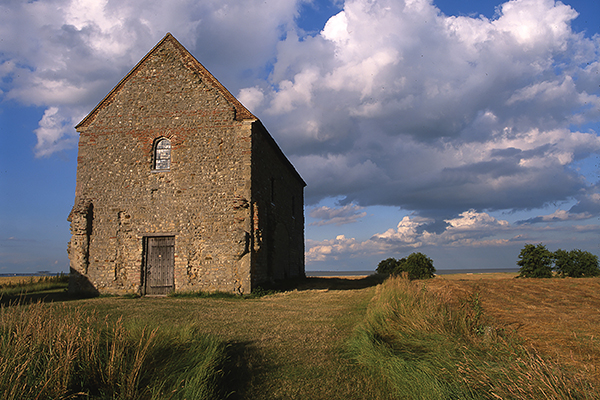
THE ROUTE: A 45-mile trail leading from Chipping Ongar through the Essex countryside and across estuarine marshes to the ancient chapel of St Peter-on-the-Wall at Bradwell-on-Sea.
HISTORY & HIGHLIGHTS: Built by a missionary called Cedd around 660-662, St Peter-on-the-Wall is still in use today (although during Elizabethan times, it also served as a barn). Every year in July, around 1,500 pilgrims gather here. Set on the edge of the Dengie Peninsula, it is surrounded by a patchwork of creeks, mudflats and salt marshes, which are populated by a variety of overwintering birds. Look out for oystercatchers, Brent geese and grey plovers.
WALK IT WITH: St Peter’s Way was designed by members of the Ramblers’ Association and an online guide is available from Essex County Council.

